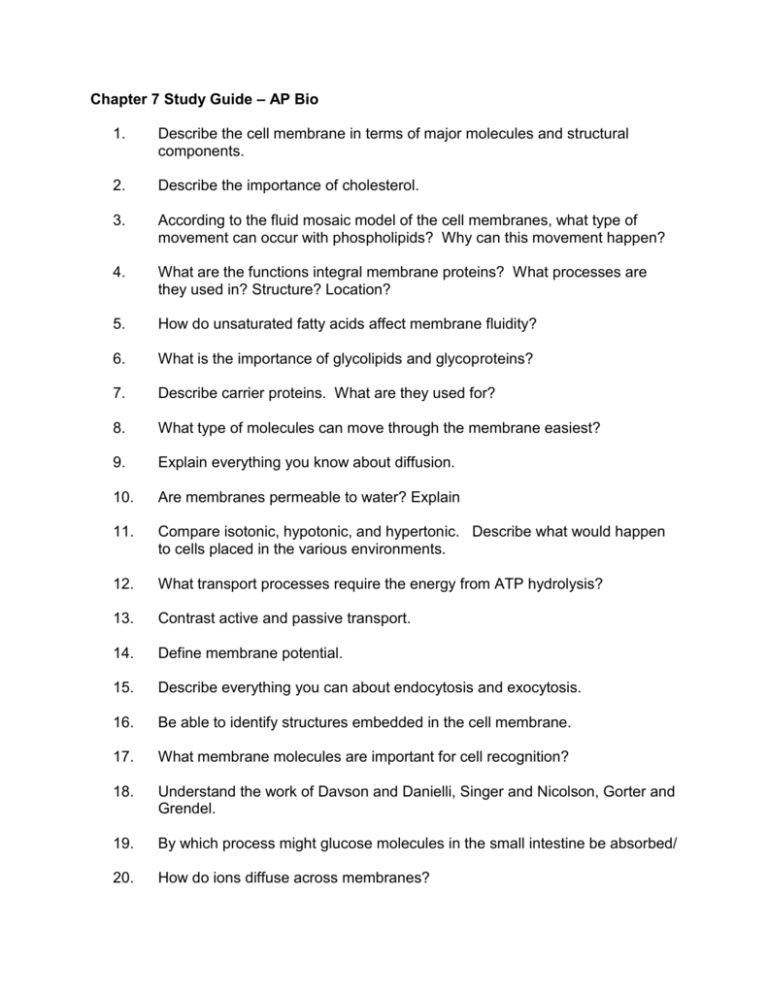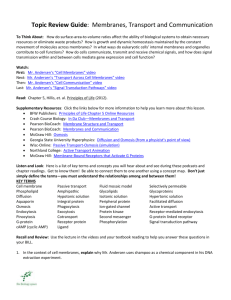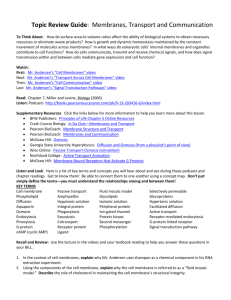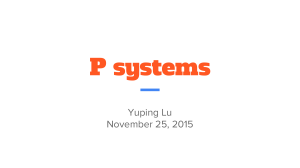Chapter 7 Study Guide – AP Bio
advertisement

Chapter 7 Study Guide – AP Bio 1. Describe the cell membrane in terms of major molecules and structural components. 2. Describe the importance of cholesterol. 3. According to the fluid mosaic model of the cell membranes, what type of movement can occur with phospholipids? Why can this movement happen? 4. What are the functions integral membrane proteins? What processes are they used in? Structure? Location? 5. How do unsaturated fatty acids affect membrane fluidity? 6. What is the importance of glycolipids and glycoproteins? 7. Describe carrier proteins. What are they used for? 8. What type of molecules can move through the membrane easiest? 9. Explain everything you know about diffusion. 10. Are membranes permeable to water? Explain 11. Compare isotonic, hypotonic, and hypertonic. Describe what would happen to cells placed in the various environments. 12. What transport processes require the energy from ATP hydrolysis? 13. Contrast active and passive transport. 14. Define membrane potential. 15. Describe everything you can about endocytosis and exocytosis. 16. Be able to identify structures embedded in the cell membrane. 17. What membrane molecules are important for cell recognition? 18. Understand the work of Davson and Danielli, Singer and Nicolson, Gorter and Grendel. 19. By which process might glucose molecules in the small intestine be absorbed/ 20. How do ions diffuse across membranes? 21. Describe sodium-potassium pumps. 22. How can the membranes of winter wheat remain fluid in the extreme cold? 23. What can be seen when membranes are freeze-fractured? 24. What does membrane permeability depend on? 25. What causes familial hypercholesterolemia? 26. What is the difference between pinocytosis and receptor-mediated endocytosis?











